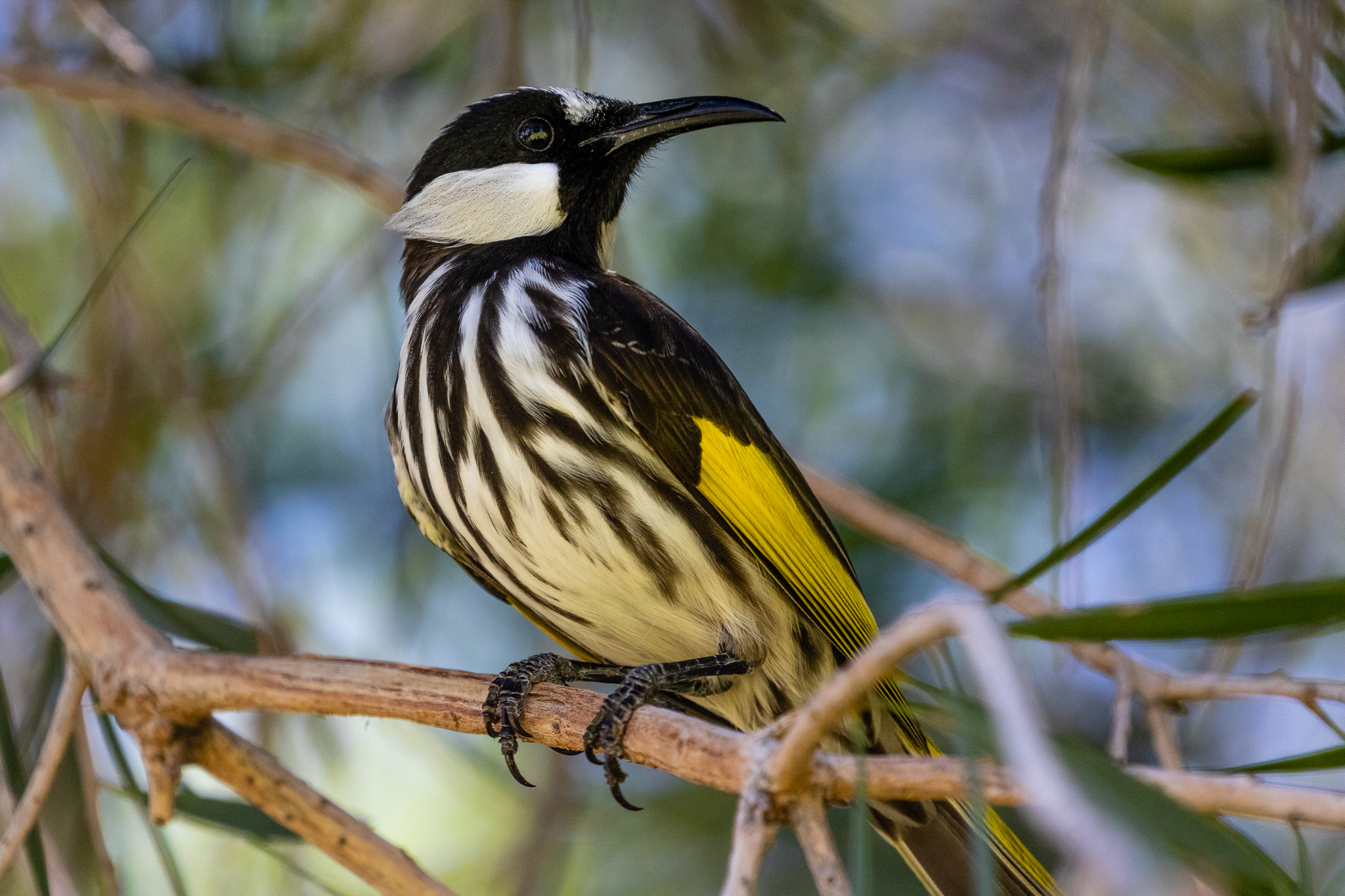Perth Western Australia
Perth provides good introductions to Western Australia’s 500 bird species. There are many parrots including Carnaby’s Black-Cockatoo, honeyeaters and an amazing five species of Fairy-wren to see. Two excellent city sites are Kings Park and Herdsman Lake with water birds, parrots and smaller birds on view.
Link to “Birds of Kings Park”
Photo: Carnaby’s Black-Cockatoo (60 cm) is one of three endemic Black-Cockatoos in WA’s South-West. Land clearing has reduced their population by half, threatening these long lived birds.
These Grey Teals were at Herdsman Lake, along with: Australasian and Great Crested Grebes, Australian Shelducks, Cormorants, Pelicans, Laughing Turtle-Doves, White and Straw-necked Ibis, Black Swans, Western Gerygone and New Holland Honeyeaters.
The Brown Honeyeater (16 cm) is common in WA. This bird was feeding on Grevilleas at the Kings Park cafe, along with Red Wattlebirds, Western Spinebills, White-cheeked and Tawny-crowned Honeyeaters.
Herdsman Lake is a good place to view Great Crested Grebes (61 cm) and their families in action. Great Crested Grebes dive for fish and prefer diving to flying when disturbed. They are found in all Australian states.
The South-Western race of Red-tailed Black-Cockatoo is also listed as threatened. The male (top) shows scarlet panels in the tail, the female (lower) shows her barred tail and white spots.
Like many Western Australian birds the Western Australian White-cheeked Honeyeater (19 cm) race varies from its eastern coast cousins. It has a narrower “white cheek”, longer bill and is thinner.
This young Tawny-crowned Honeyeater (17 cm) shows the immature plumage, lacking the adult’s dark mask that extends down to the breast.
Straw-necked Ibis (70 cm) are seen feeding on insects in the parks around Perth. Often in small to very large flocks.
As in other parts of Australia, the Rainbow Lorikeet makes its noisy and aggressive presence in the city of Perth and its surrounds. The Rainbow Lorikeet is an unwelcome newcomer, recently introduced to the city.
Australian Shelducks (73 cm) are often seen feeding on pasture and here enjoy the park and creeks that surround Herdsman Lake. The female (left) shows her white eye ring and bill base.Both male (right) and female wear the same handsome white collar.
Welcome Swallows (15 cm) and Tree Martins can be seen across flying low across Perth’s parks and waterways.
This Western Gerygone (11 cm) was seen on the Olive Seymour boardwalk at Herdsman Lake.
The Laughing Turtle-Dove was introduced to Perth from Africa in the nineteenth century. It is now well established across the South-West of Australia. Its name comes from its characteristic call.












